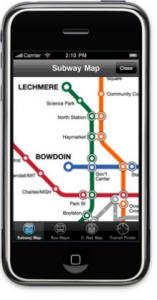(Not) Understanding Government
1. To reiterate from yesterday, the (primary) reason that Rollin Stanley is so disconcerting is that he is painfully direct.
2. today's Post has a piece about how WMATA, the DC transit organization, is "stonewalling" safety checks by the advisory safety organization that seemingly provides oversight. See "Metro barred safety checks on tracks."Of course, the Post misses the point about requiring oversight, saying this is a problem of the federal government. From the article:
The dispute encapsulates what many safety experts and federal officials have described as a fundamental flaw with Metro and other subway systems: a lack of effective and enforceable oversight that leaves transit systems in charge of policing their own safety. Unlike with other forms of transportation, the federal government cedes primary oversight of subways to a patchwork of state-level monitoring boards.
It isn't. DC, Maryland, and Virginia could jointly mandate oversight and create a regulatory structure to do it. It's merely a matter of having the Public Service/Utilities Commissions of the respective jurisdictions be given oversight and the money to set up and implement the system.
If the California Public Utilities Commission manages to have and execute a mandate to oversee the transit authorities within the State of California, nothing prevents something similar from happening in the DC-MD-VA region.
And in the pre-government owned transit system days (such as when a streetcar system existed in DC), the local public utilities commission did in fact have oversight over the streetcar system. Recently, I managed to pick up a print of the old Public Service Commission laws (printed in the 1940s or 1950s). Some time this week, I will thumb through it to see what it says about this.
3. But it is interesting to think about government, how it operates, and how it stonewalls, no differently usually than privately run organizations, with one exception. In my opinion, perhaps the biggest problem with government is that most elected officials (not all) are lawyers. And the agencies are top heavy with lawyers and everything needs legal review before it can go forward.
I understand this, but except for lawyers who work to help start up firms, most lawyers are inherently conservative and fail to think expansively. Lawyers are not about transformation, about challenging how things are done, for the most part they are about stare decisis, about doing things the same way as they have been done.
When resources are constrained, when systems aren't working, stare decisis doesn't offer a way forward.
4. This I think is true even of our friend President Obama. There isn't a whole lot that is creative in the proposals for national health insurance. There is no fundamental rethinking of how "health care" (not health insurance) is provided in a way that is transformational, deals with costs and other considerations. (For example, see "Budgeting for diabetes care requires a long view." from Governing Magazine.)
5. But even the difference between WMATA -- and again, my joke about "small" government in the DC region is that it is shaped in the image of the federal government, so think ossification -- and MBTA in the Boston area is that MBTA is open to "open source" propagation of information about transit schedules and WMATA is not, as has been amply discussed in Greater Greater Washington.

iPhone transit application for Boston.
The Boston Globe has a nice piece, "iPhone app has public transit down ‘To-A-T’," about MBTA's new approach:
To-A-T is an application that uses an iPhone’s GPS feature to locate the closest MBTA subway or bus stop, and tell users when next train or bus will arrive. But state transportation officials also like it for another reason: To-A-T did not cost them any money. Wonderland Development, based in Cambridge, developed the app using publicly available scheduling data the T posted on its website last spring.
“The beauty of releasing the data is it frees us from having to develop the applications ourselves,’’ said Chris Dempsey, an assistant secretary in the Massachusetts Executive Office of Transportation. “That’s expensive and something that we’re not very good at.’’
Transportation officials are promoting a contest they hope will result in even more data-based apps for commuters. The best ideas will be dis cussed at an all-day conference on transportation and technology Saturday at the Massachusetts Institute of Technology. The winners receive Charlie Cards good for a year’s worth of free rides on the T.
The conference is aimed at bringing together app developers, T riders, and transportation officials to figure out what types of applications would be useful and which ones they could live without. In addition to more sophisticated apps tailored to the iPhone, transportation officials want developers to create more basic functions, like an application that would provide schedule information via standard text messaging.
This is similar to the "Transit Camps" that have been organized in places like Toronto ("Minding the gaps on The Better Way" from the Toronto Star, website) and San Francisco, and something I have written about in the past, harvesting the interest and energy of users. Also see the Wikipedia article, "Leveraging Worldwide Transit Knowledge."
While this is frequently associated with software development, there is no reason that "user generated content and involvement" has to be computing/technology specific.
6. And this gets back to the idea of using the design method, rather than the more traditional and more static "rational planning" method for organization design and transforming how government agencies work and how public services are provided.

Design method.
Also see these past blog entries:
-- (Ir)rational planning
-- Social Marketing the Arlington (and Tower Hamlets and Baltimore) way
-- Disruptive innovation (once again) and Bods/Cuerpos
Labels: change-innovation-transformation, government oversight, provision of public services, rational planning, sustainable land use and resource planning, transportation planning



0 Comments:
Post a Comment
<< Home